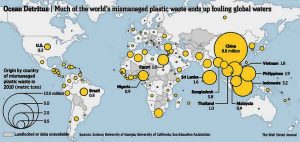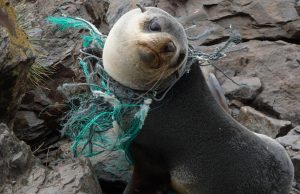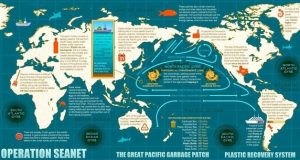EPA Enforcement Actions Help Protect Health of Vulnerable Communities from Lead Paint Hazards
WASHINGTON (October 28, 2022) – As part of National Lead Poisoning Prevention Week, today the U.S. Environmental Protection Agency (EPA) highlighted several federal enforcement actions completed from October 2021 through September 2022, as well as future planned investigations. These actions ensure that renovation contractors, landlords and realtors comply with rules that protect the public from exposure to lead from lead paint. By bringing companies into compliance with these rules, EPA protects future customers and their families.
Lead-contaminated dust from chipped or peeling lead-based paint in homes built prior to 1978 presents one of the most common causes of elevated blood lead levels in children. Infants and children are especially vulnerable to lead paint exposure because their growing bodies absorb more lead than adults do, and their brains and nervous systems are more sensitive to the damaging effects of lead.
“Because lead-based paint is the most common source of elevated blood lead levels in U.S. children, EPA is taking action against those who violate federal lead-based paint regulations and ensuring the public understands the danger of this hazard,” said Larry Starfield, EPA’s Acting Assistant Administrator for the Office of Enforcement and Compliance Assurance. “The enforcement actions EPA took this past year send a clear message that EPA is committed to enforcing regulations designed to protect the public from lead-based paint exposure.”
Reduction of childhood lead exposures is a high priority for EPA. These enforcement actions reflect the agency’s continuing commitment to implementing the Federal Lead Strategy and EPA’s Lead Strategy and result in reducing or eliminating lead exposures, particularly to children.
Regulations under the federal Toxic Substances Control Act (TSCA) and the Residential Lead-Based Paint Hazard Reduction Act (LHRA) apply to most pre-1978 dwellings and child-occupied facilities such as pre-schools and child-care centers. TSCA’s Renovation, Repair and Painting Rule (RRP) and Lead-based Paint Activities Rule require contractor certification and lead-safe work practices. LHRA’s Section 1018 Lead Disclosure Rule requires disclosure of information about lead-based paint before the sale or lease of most housing built before 1978. By ensuring compliance with federal lead-based paint requirements, EPA addresses a major source of lead exposure that occurs in communities across the nation.
The cases below involve alleged noncompliance with at least one of these lead paint requirements. These cases highlight the range of the Agency’s work, including:
- criminal prosecution in conjunction with the U.S. Department of Justice (DOJ),
- a focus on geographic areas that suffer from disproportionate levels of lead exposure, and
- bringing civil administrative actions against renovators with a far-reaching influence on the compliance landscape locally, regionally or nationwide.
By ensuring compliance with federal lead paint requirements, EPA strives to address major sources of lead exposure that occur throughout the nation and particularly in areas of environmental justice concern. In addition to EPA’s actions, the Agency supports states, tribes, and territories on the implementation and enforcement of the EPA-authorized lead-based paint programs.
Although the federal government banned residential use of lead-based paint in 1978, it persists in millions of older homes, sometimes under layers of new paint. Lead exposure, particularly at higher doses, continues to pose a significant health and safety threat to children, preventing them from reaching their fullest potential for their health, intellect, and future development. Even small amounts of lead dust can cause harm to children living in the home.
Case Highlights:
Two Chicks and a Hammer, Inc. of HGTV’s “Good Bones” Settle to Resolve Alleged Renovation, Violations
Warner Bros. Discovery Network’s “Maine Cabin Masters” Renovator Agrees to Include Lead Paint Compliance Information in Upcoming Episodes as Part of Settlement
GB Group, Inc. Settles to Resolve Alleged Renovation Violations
Property Management Firm Settles Alleged Lead Renovation and Asbestos Violations
Property Manager Sentenced for Failure to Properly Notify Tenants about Lead Hazards
Owner of Maryland Lead Inspection Company Sentenced
To see additional highlights of FY2022 enforcement actions involving lead, see EPA’s 2022 Lead Enforcement Bulletin.
Members of the public can help protect our environment by identifying and reporting environmental violations. Learn more about reporting environmental violations.
Healthy Home and Health Community Articles
Lead in Drinking Water and Impacts on Wildlife
Asbestos is a naturally-occurring mineral created by geochemical processes within our planet. Although infamous for its link to cancer, it also has many potential beneficial properties. The difficulty is to avoid the negative aspects of this potentially dangerous mineral while enjoying its positive aspects.
Radon – Radionuclides – Cancer (Polycythemia vera (pol-e-sy-THEE-me-uh VEER-uh)) – Radon is a gas produced by the radioactive decay of the element radium whose remote parent is either uranium or thorium
Forever Chemicals – What Are PFOA, PFOS, PFAS, and PFCs ? Per- and polyfluoroalkyl substances (PFAS) are a grouping of man-made fluorinated organic chemicals that have a wide range of use in industrial application and commercial goods
Water Quality Association supports PFAS Plan for Drinking Water
EPA suggests consumers have water tested and use certified in-home filtration to remove or reduce levels of these toxic chemicals
LISLE, Ill. – The Water Quality Association supports the U.S. Environmental Protection Agency (EPA) taking steps toward setting a safety threshold for highly toxic drinking water contaminants known as PFAS. Acting EPA Administrator Andrew Wheeler on Thursday outlined a plan that addresses drinking water and cleanup concerns as well as monitoring of PFAS, expanding research and improving enforcement.
“We are encouraged that the EPA is continuing to move forward with establishing a consistent standard across the country for these dangerous chemicals,” said WQA Global Government Affairs Director David Loveday. “We strongly support the action plan’s recommendations that consumers have their drinking water checked by a certified laboratory and then use certified in-home filtration to remove or reduce any chemicals found.”
In September, a letter from WQA supporting further study of human health risks of PFAS contamination and using in-home treatment technologies to combat them was introduced into testimony before a U.S. House Energy and Commerce subcommittee. Research shows POU/POE treatment “can be used to successfully treat for these contaminants at the home or in a building,” said the letter from WQA Executive Director Pauli Undesser. “They cost only a fraction of the price our society would need to bear to upgrade our drinking water treatment plants for PFAS removal.”
Last May, Loveday and WQA Technical Affairs Director Eric Yeggy took part in the EPA’s PFAS National Leadership Summit, which called for a national management plan.
Per- and polyfluoroalkyl substances, known collectively as PFAS, are man-made chemicals found in such things as firefighting foams and stain-resistant, waterproof and nonstick coatings. Because they break down slowly, if at all, they have turned up in drinking water systems across the nation in varying levels. Some individual states have begun regulating the chemicals.
For individuals concerned about PFAS, the EPA Plan states:
“The EPA recommends contacting your state for a list of laboratories that are certified to test for PFAS using EPA Method 537. If you find PFAS in your drinking water, certain PFAS can be reduced or removed through the use of in-home point-of-use or point-of-entry water filters. It is important to keep in mind that any in-home treatment device should be certified by an independent party.”
In-home technologies such as reverse osmosis, carbon filtration and anion exchange have been independently tested and proven to be a successful final barrier to treat drinking water for PFAS.
WQA is a non-for-profit, accredited independent third-party certification body by the American National Standards Institute (ANSI) and the Standards Council of Canada. WQA’s website provides additional information on PFAS chemicals and product certification.
As part of its annual DC Fly-In and the Water Resources Congressional Summit on March 5 and 6, WQA members and staff will discuss PFAS in meetings with Congressional and federal agency staffs. Fly-In registration is open through Friday, Feb. 15.
WQA is a not-for-profit trade association representing the residential, commercial, and industrial water treatment industry. WQA’s education and professional certification programs have been providing industry-standardized training and credentialing since 1977. The WQA Gold Seal certification program has been certifying products that contribute to the safe consumption of water since 1959. The WQA Gold Seal program is accredited by the American National Standards Institute (ANSI) and the Standards Council of Canada (SCC).
pfas_fact_sheet_history_and_use__11_13_17
Water Testing Links
Plastics – Stop Littering – We need to make a change !
by S. Oram (new blogger)
Where do you throw your plastics and trash when you are done with it? I would hope you say you RECYCLE ! Because just throwing that container away by mixing it with the normal trash or discarding out the window creates problems. Part of this problem is POLLUTION. This pollution creates visual aesthetic issues, but also damages habitat and threatens the land, air, and sea animals. Did you ever stop and think about how these things can affect the animals outside? Most plastic waste comes from third world countries especially in China, but we can still make a difference.
 https://goo.gl/images/38xfsv Online Source –
https://goo.gl/images/38xfsv Online Source –
In the 1970s, the National Academy of Sciences estimated about 45,000 tons of garbage and waste was being tossed and thrown in the ocean. Since initial estimate, it has gotten even worse. Many people throw things in the ocean and don’t think about the animals in it or the other uses downstream. The materials can get wrapped around the animals or some of the animals eat. The animals become hurt, sick, and die. Littering can kill marine life and destroy habits. Some people don’t stop to think about the animals and their safety. Over 100,000 marine mammals and 1 million sea birds are killed each year from plastic pollution and 6 million tons of debris, i.e., a ton is 200 lbs , enters the ocean each year. It is time to say – Enough!

Sad there is no reason to create this type of pain and suffering.
Did you know it can take up to 450 years for plastic bottles to decompose? This does not appear to be true. “Scientists Thought It Took Thousands of Years for Plastic to Decompose – It May Only Be Decades” and “A more recent study revealed that PET degrades more rapidly than previously thought in ocean water due to the presence of metal ions in the water. Fifty percent degradation was said to occur in 4.5 years and 100% degradation in 72 years.”
Where is most of this plastic? (Operation Seanet)
Here is a list of wastes that go in the ocean and how long it takes to decompose.
Foam cups and tin cans – up to 50 years.
Plastic bottles depending on type and environment could be up to 450 years (Source)
Fine fishing net up to 600 years (much longer for heavier nets).
Cigarette butts- 1 – 5 years.
Plastic bags- 10 – 20 years (Some putting this debris in a plastic bag is not good enough) . The bags breakdown and this it may take 100s of years for the content to decompose.
SO – Simply Bagging the Trash is Not a Solution and Putting the Plastic in a Landfill is the Wrong Choice. We must make every effort to recycle, reuse, and then put our young minds together and help to clean up our oceans, beaches, and landscapes and develop better solutions.
My call to action:
- Please think twice before littering and think twice before throwing stuff away, especially plastic bottles.
- Try Going Bottleless –We tried and we saved money.
- Pick up litter and Recycle – Participate in local clean up events.
- Try to kick the plastic habit.
- Check out Operation – Seanet
other Articles
PFAS Cycle – https://shop.knowyourh2o.com/blogs/news/pfas-and-forever-chemicals-a-new-man-made-cycle-the-pfas-cycle-that-must-be-broken
Plastics and the Environment – Debunking Myths and Responsible Practices
Wildlife and Lead Poisoning – Lead is not Just a Problem for Humans
Sources:
http://www.perseus-net.eu/site/content.php?locale=1&sel=517&artid=565
https://www.dpaw.wa.gov.au/management/marine/marine-parks-wa
http://www.bluebird-electric.net/oceanography/Ocean_Plastic_International_Rescue/Logistics_Recycling_Plastic_Ocean_Cleanup_Cargo_Operations.htm

